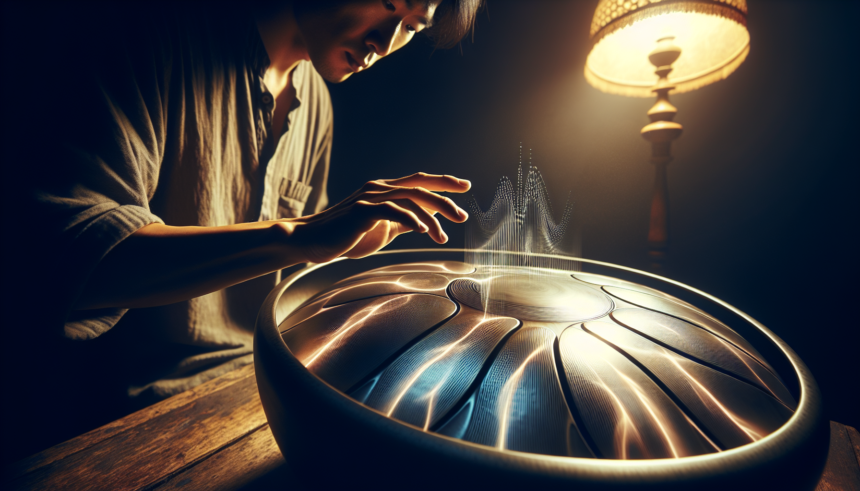The handpan, with its ethereal and mesmerizing sound, has captured the hearts of musicians and listeners alike. This unique instrument, a fusion of percussion and melodic tones, can produce a wide range of sounds, from deep, resonant bass notes to shimmering, delicate harmonics. Understanding the art of crafting harmonics in handpan playing can elevate your music, enabling you to create intricate soundscapes that resonate deeply with your audience.
Harmonics, also known as overtones, refer to the higher frequencies that occur naturally along with a fundamental pitch. These overtones are integral to the handpan’s distinctive sound. Mastering this aspect of handpan playing requires a combination of technique, knowledge, and an intuitive feel for the instrument. In this article, we will delve into the nuances of harmonics in handpan playing, discussing foundational techniques, the importance of touch, and practical exercises to enhance your harmonic skills.
Understanding Harmonics
Harmonics occur when a fundamental note generates higher-pitched frequencies at specific intervals. Every musical instrument produces harmonics, but the handpan’s shape and construction amplify them in a unique way. Essentially, when you play a note on the handpan, you are not just hearing a single pitch but a series of pitches layered over one another.
To recognize harmonics, it’s essential to develop a keen ear. Listen closely to each note played on the handpan and identify the subtle, higher-pitched sounds. These are the harmonics. Skilled handpan players often emphasize these overtones to give their performances a rich, complex texture.
Techniques for Crafting Harmonics
1. Striking Position
The point at which you strike the handpan can greatly influence the harmonics produced. Striking closer to the edge of a note area often emphasizes the higher overtones, while striking the center typically generates a more fundamental pitch with fewer harmonics. Experiment with various striking positions to understand how each influences the sound spectrum produced by your handpan.
2. Hand Position
Your hand’s position and angle can also affect the harmonics. A relaxed, curved hand with slightly bent fingers tends to bring out more overtones compared to a flat, rigid hand. Additionally, the part of your finger or hand that strikes the note (such as the pad of your finger, the knuckle, or even the edge) can produce varying degrees of harmonic content.
3. Touch Sensitivity
The intensity with which you strike a note affects its harmonics. Light touches often emphasize higher harmonics, while stronger strikes can dampen these overtones and highlight the fundamental note. Developing an intuitive sense of touch sensitivity enables you to modulate the harmonic content in your playing effectively.
The Role of Tuning and Material
The tuning and material of a handpan play crucial roles in its harmonic structure. Handpans are typically tuned to specific scales, and each note is carefully crafted to produce a rich harmonic series. The type of steel used, whether nitrided or stainless, and the tuning method, whether by hammer, by tuning machines, or by heat treatment, all contribute to the handpan’s tonal quality and harmonic behavior.
Investing in a well-crafted handpan from a reputable maker ensures that the instrument will provide a balanced and rich harmonic spectrum, enhancing your ability to craft beautiful, resonant music.
Practical Exercises to Enhance Harmonic Skills
1. Harmonic Mapping
Start by individually striking each note on your handpan and listen carefully. Make a mental or physical note of the harmonics produced by each strike at different positions. This mapping exercise helps you understand the unique harmonic characteristics of your instrument.
2. Dynamic Control
Practice playing notes with varying degrees of force. Begin with a light touch and gradually increase the intensity. Pay attention to how the harmonics change with each level of force. This exercise improves your touch sensitivity and control over harmonic content.
3. Harmonic Patterns
Develop exercises that specifically target harmonic playing. For instance, create simple rhythmic patterns focusing on striking positions that highlight harmonics. These patterns can serve as warm-up routines that enhance your muscle memory and harmonic sensitivity.
4. Integrating Harmonics into Melodies
Once comfortable with isolated harmonic exercises, integrate them into your melodic playing. Practice scales and familiar melodies, consciously emphasizing harmonics in certain passages. This practice will help you incorporate overtones seamlessly into your musical phrases.
Conclusion
The art of crafting harmonics in handpan playing involves a blend of technical skill and intuitive understanding. By mastering striking positions, hand techniques, and touch sensitivity, you can unlock the rich harmonic potential of your handpan. Additionally, appreciating the role of instrument quality and material further enhances your ability to produce beautiful, resonant sounds.
Through dedicated practice and mindful listening, you can develop a nuanced approach to harmonics, enriching your handpan playing and creating music that resonates deeply with listeners. Embrace the journey of exploring overtones and allowing the handpan’s unique harmonic voice to inspire your creativity.
Frequently Asked Questions (FAQs)
1. What are handpan harmonics?
Handpan harmonics, also known as overtones, are higher-pitched frequencies that occur alongside a fundamental note. These overtones contribute to the handpan’s unique and rich sound, adding depth and complexity to each note played.
2. How can I emphasize harmonics in my handpan playing?
To emphasize harmonics, experiment with striking positions, hand angles, and touch sensitivity. Striking closer to the edge of a note, using a relaxed hand position, and applying light touches can help highlight the harmonic content of your playing.
3. Does the type of handpan material affect its harmonics?
Yes, the material and construction of a handpan significantly affect its harmonic structure. Different types of steel and tuning methods contribute to the instrument’s tonal quality and harmonic behavior. Investing in a well-crafted handpan enhances your ability to produce rich, balanced harmonics.
4. Are there specific exercises to improve harmonic skills on the handpan?
Yes, several practical exercises can enhance your harmonic skills, such as harmonic mapping, dynamic control, and harmonic pattern practice. These exercises develop your understanding of your handpan’s harmonic characteristics and improve your touch sensitivity and control.
5. How do I integrate harmonics into my handpan melodies?
Integrate harmonics into your melodies by practicing scales and familiar tunes with a conscious focus on emphasizing overtones. Gradually incorporate harmonic playing into your musical phrases, allowing the overtones to enrich and add depth to your melodies.





